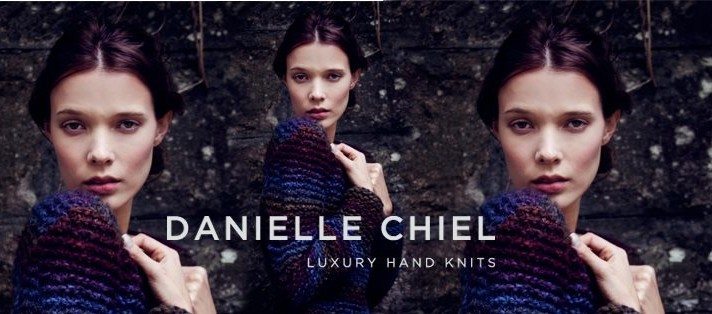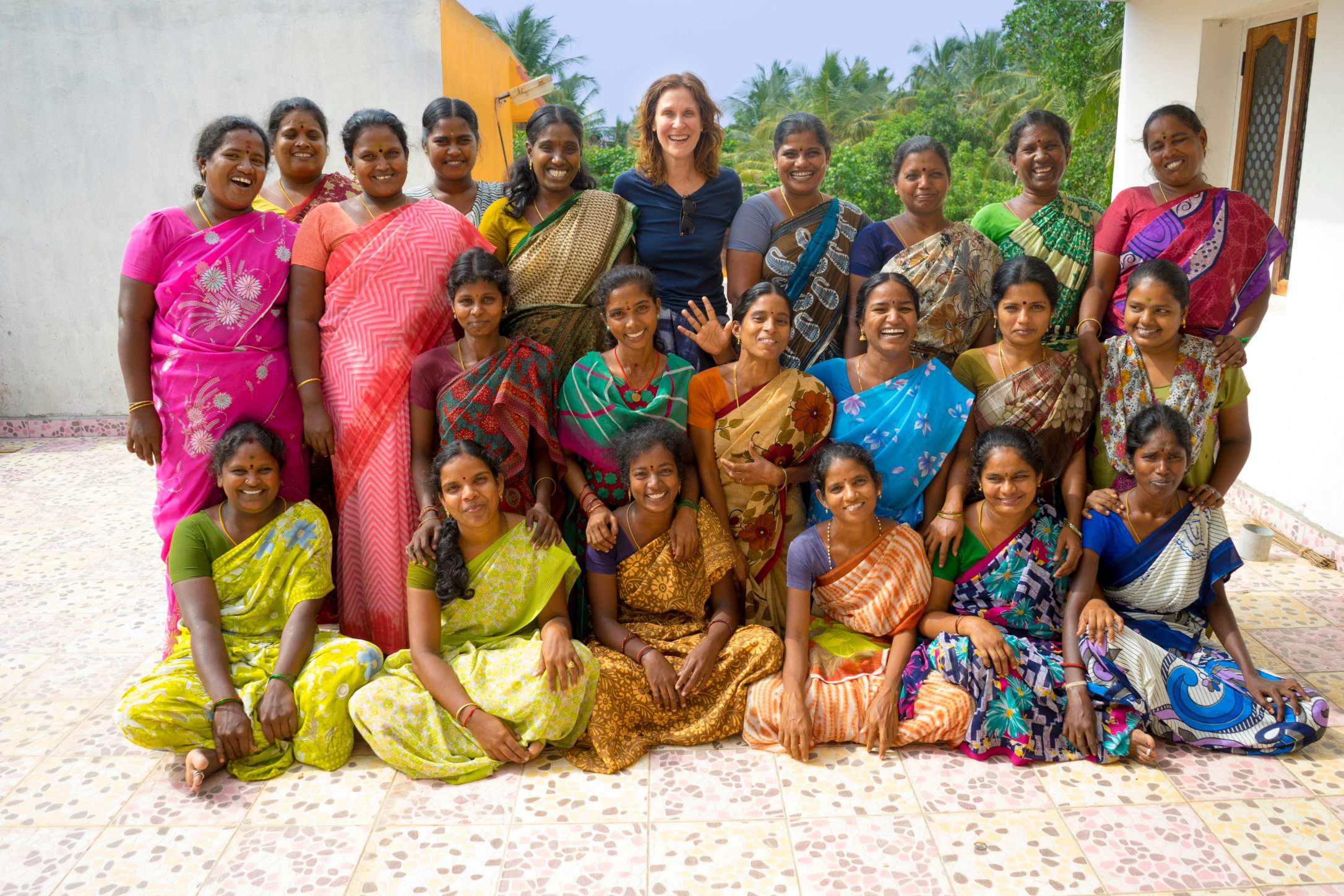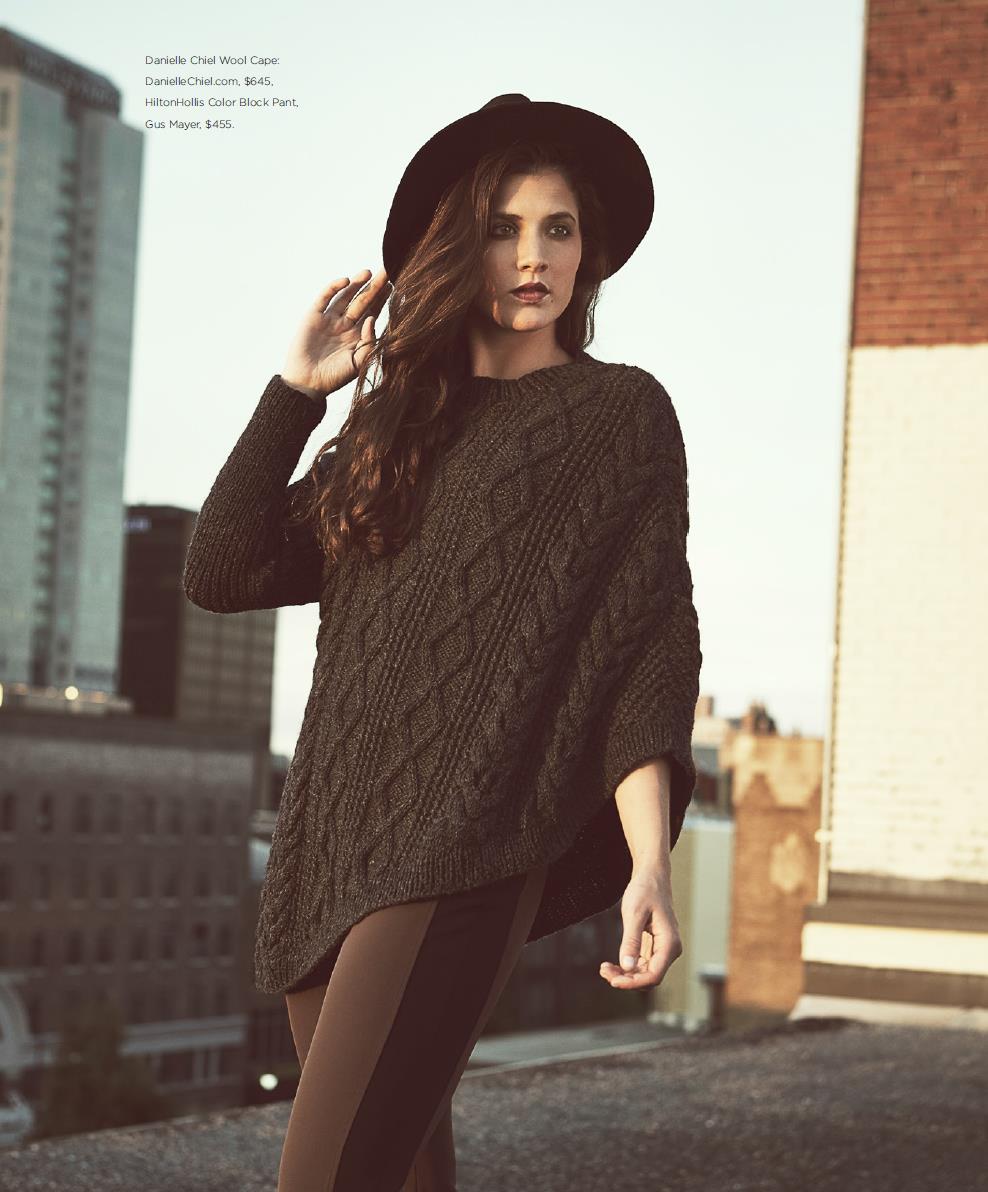
Australian designer Danielle Chiel is working on getting luxury knit wear onto the worlds catwalks, in luxury stores and in everyone’s closet around the world. I talked to Danielle about the fabric of her company from conception and design of her line to how she’s changing the socio economy in one village in India.
CC: While many designers have moved to mass production, you are focusing on personalised production, tell me about the decision of you choosing to go in that direction.
Danielle Chiel: It’s such a good question. I am over forty and this is a midlife change of career for me. So I didn’t wake up one day and decided to be a fashion designer, whilst I am doing it very well, that was my secondary goal. My primary was always to put hand knits on the world’s catwalk and to have a global brand of high-end hand knits and my own label. So in order to specialize in hand knitted garments, I did the research myself and different countries do it in different ways, but the way to get the best result is to have one person hand make the whole item. It takes so long to knit a hand knitted jumper it’s not possible to turn them out for the mass marker. So whilst we are a fully viable commercial unit, so I can provide for my own brand, hundreds of units, and we also knits for other brands so we can provide them hundreds of units also. That just means that I employ a lot of women and they still are all personally made.
[huge_it_gallery id=”36″]CC: Luxury Hand Knits is providing socio economic stability, a trade and a financial income in a village in India. Tell me how this came about.
DC: Yes, well, again, it’s been quite the journey. When I go there, the business started to grow more rapidly when the women started to come to me. So they will know where I stay and sleep and when I visit the various villages and at six o’clock in the morning they are at my door saying “can you employ me? Can you employ me?” So that motivated me to want to sell more because I can’t say yes until I, obviously, sell more jumpers. So it’s a chicken and the egg cycle.
CC: Right, of course.
What happened was that they can see the impact that this regular employment is having on the women there. So these women that I employ, most of them have either very little education, when I say little education I’m talking about years or grades one and two, so that’s like seven or eight years old. And they leave, there are a few that have finished their primary school education, which is age ten, eleven or twelve, depending on the village. But I think there is only one person out of all the hundreds of women that I employ, which has completed their high school education. So because there’s no opportunities for them in their village this is an amazing opportunity. So some of the side effects it’s had is first of all, it injected a new economy, not only into their initial family, but into the whole village. So of course it has made the obvious financial difference, that they never imagined they have and that has broken the cycle, which means their children don’t have to leave school at grade one, at age seven or eight, because they are poor. They have to pay for their children’s education and so their children can go.

It brings in money for the women of the family, it has broken the education cycle, so that means that the next generation can be fully educated. It has all sorts of other ramifications on their confidence. I take groups of women to India, on a regular basis to meet the women who make the clothing. In fact I will be taking a group from America next year. So these foreigners come in and have an opportunity to ask all these women questions. I didn’t realise this myself but in the last group that I took last November, one of the local ladies was telling one of the foreigners “before we worked for Danielle, because it was a small rural village, we never spoke to anybody other than our parents or a neighbour”. So now, they speak to all these women, they have new friends and their level of confidence has increased incredibly. So much so, they told me it was a new thing for them to go up and talk to their child’s schoolteacher and that they have never spoken to anybody outside of their immediate neighbours. So that alone is a break in the confidence zone and it has just done so much for them, they can communicate with their child’s schoolteacher, and all these things have a huge impact on the individual’s lives, on the family’s lives, on the lives of the villages. There are lots and lots of ways in that their lives have changed it is incredibly rewarding, as you can tell, for me and for them. It is mutually beneficial.
CC: Tell me about the groups that you bring over, who can come?
DC: Anyone can come, it is a regular organised trip and it has is 50/50 component. Like 50% of the component is to promote my brand, to meet the women that make my brand and part of that is to go to their houses. We have a day cooking, where you learn to cook Indian food in their house. Then we go shopping and come back to eat it all, you get to meet these women and spend a lot of time with them. And of course they love to knit you a jumper. So that’s part of the brand promotion type. But the other side of that is it is a well organised tour of southern India, we take you to Pondicherry and we take you around to all the places that I have known so well. Because I go there every six to eight weeks, so you know, there is that opportunity to blend and have a wonderful cultural experience. See the women who make my garments and to tour southern India. So the participants have an amazing time and that’s what I call insides behind the scene.

CC: Yes, it is creating a really deep bond with Luxury Hand Knits and its consumers. My next question was, why India?
DC: Well, it is interesting, it happened by default. Australian legislation changed and it became prohibitive for numerous reasons here in this country. It was always my dream to have Australian knitters doing hand knits for the world. Australia has a wonderful body of knitters, but that wasn’t to be because the legislation changed. So I had to look for another country, I looked in Vietnam, America, New Zealand and Cambodia. Like all things in life it just fell into place, because somebody introduced me to some women in that area that could knit. So I flew over and met them and that was just the beginning of a long story. And in that process I fell in love with them, of course I can’t speak their language. I’ve had to write fifty knitting modules for them to learn the skills because the original ten women that I had, could knit, but certainly not to the standard or technique that I wanted them to use. And now we have got hundreds of women. I run like a training college.
CC: I was going to say, you must have some sort of education in place.
DC: Yes it is huge, they learn to read English and they learn to read all the knitting jargon so that they can read all the patterns. And that is a six month process before they start knitting garments that are of a commercial value. So it has been a massive undertaking but all that has been established for quite an extended period of time now and that’s how the garments get made.
CC: Take me through the process of creating one of your pieces:
DC: The difference of working with a knitted fabric as opposed to a woven fabric is that you start with the yarn and there is no fabric. So the first step is to get various swatches made from whatever medium that we wish to do that collection in. So I do knit a lot with wool, I knit a lot with Australian Merino wool, which is the best in the world. But in addition to that we knit with all sorts of other mediums we rip up silk and I have a collection out of ripped up silk. We do ribbon, we knit ribbon. We are about to launch, what might be the world’s first hand knitted leather collection. We put leather and we do leather garments. So the first step is to do the swatch, and that takes a few doings, we have to get the right stitches, the right needle sizes and once we have to swatches correct we do the styles and then the process is the same as normal mainstream fashion. SO we draw the sketches, we get the specs done. There is an extra step in there where we have to get the instructions written. And because the garments are knitted by people who don’t have English as a first language we write the patterns out in our own fool proof way so that they are error free. And then, inevitably, the first one has to be tweaked a little bit and then we have our samples before we go into production.

CC: What is your opinion on fast fashion, since your collection is the opposite of fast fashion. Are you okay with them? Are you trying to get everyone to move away from the fast fashion consumerism?
DC: Well perhaps I’ll give you an analogy to food, just because it has been around a little longer. When it comes to food I myself go to phases, so sometimes I can have a total chocolate binge and then after that I think “this is awful, I’m not going to eat junk food anymore”. I can stick with that for like three months, six months max, and then I go back to the junk food, and then sometimes I think “oh, I should eat organic food, especially organic chicken” so I buy that. But for me I think it is just a matter of realising that everybody is human, everything has its place and it is a matter of knowing that there is choice, so of course I own some of what I call ‘fast fashion’ garments, but I also wear and love the hand knitted garments. I’m not sure if you have ever worn a garment that somebody has knitted for you by hand, most people have one from their childhood. And either they don’t like the colour or the style so it is very common that they don’t wear it out in public. But they remember how wonderful it feels when you put it on, it feels incredibly special. So what we have done is created a fashion forward look so that can wear them out in public and feel proud and it is made incredibly well. We use couture techniques so you can have that wonderful feel in a fashion garment and for me it is just a matter of having that total balance. So if someone died, god forbid, without ever tasting a homemade cake, if you only ever had supermarket cake, it is a feeling that you sort of was missing out on. So I guess that one of the things that I really love is for most people to have at least one hand made hand knitted garment in their wardrobe. Because it feels different and it is just, you need a bit of everything. You need fast fashion, you need slow fashion, people need coats, they need boots, they need sweaters, and they need a total balance in their wardrobe.
CC: It sounds like the perfect staple. How has luxury handknits changed you?
DC: Well, one of the big things is my goal. My goal, when I started this brand, was to have it global, to have it on the worlds catwalks, to have high end brands having a hand knitted part of their range as well as me having my own brand so that many people had a hand knitted part in their wardrobe. But what’s changed so much is my absolute passion for these women, when you realise the impact on their lives. I just want to employ as many of them as I am physically able. I have done the math, since it takes one lady one month to finish one jumper, if I employ 83333 women, that means we are selling a million jumpers a year. But is has a so much greater impact than that, it means that it change the faith of fashion forever. It means we changed the lives of so many women, children, it is intergenerational, and village, to be able to educate themselves. Nobody can knit all day and not love it. They have group therapy there, they teach each other how to budget. Like the change in their lives is phenomenal. So I have this massive goal to employ that many women and we will be far reaching.
CC: What is next for you? Where can we find you?
DC: Well, in order to employ more women, obviously I have to sell more jumpers or sweaters like you call them in America, garments. So what’s next for me is to launch my brand in the US. And that, by default, will employ more women. Of course it goes unsaid that if anybody wants to join the trips, to see these women they don’t have to own a garment, they are welcome just to come. And if they want to have that experience, they are most welcome.
Shop: Danielle Chiel Luxury Hand Knits
Tours: Email danielle@daniellechiel.com.au for brochures and more information.
- SCOPE Miami Beach 2019 Art Basel - December 10, 2019
- Sports Personality and Philanthropist Ann Liguori celebrated her cover on Resident Magazine This Week in NYC - November 8, 2019
- Get Your Glow On This Labor Day Weekend - August 27, 2019
